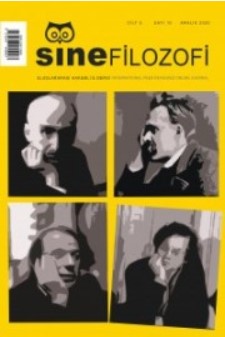L’Amant Double Filminde Öteki Mekân Temsili Olarak Heterotopya
Heterotopia as a Representation of Other Space in the movie L’Amant
Author(s): Muhsine SekmenSubject(s): Contemporary Philosophy, Film / Cinema / Cinematography
Published by: Serdar Öztürk
Keywords: Heterotopia; Foucault; Cinema;
Summary/Abstract: Considering that the relationship between power and subject is shaped by biopower with the transition to modern life, Michel Foucault developed the theory of heterotopia as a way to get rid of this structure that limits the individual. While modern urban life offers the individual a life style which is in accordance with power in the business life, individuals who go against these rules try to create new spaces for themselves by wanting to alienatine from society. In this context, while Foucault argues that there is the idea of space in the basis of the anxiety of individuals in the twentieth century, he wants to highlight the idea of creating new spaces, namely heterotopia. Based on Foucault’s heterotopia and Stavrides’ thresholds theory, this study examines the areas of heterotopia as a represantation of the other space in François Ozon’s L’Amant Double. The heterotopia areas that were used remarkably in the movie L’Amant Double were effective in selecting the study as a sample. In this context, psychiatry clinics as deviation heterotopias, museums as time heterotopias, mirror heterotopia as a non-existent place and bridges and stairs as threshold areas are the categories that are examined in the film. This study aims to analyse the forms of heterotopia which has been presented in different ways in cinema while studying the fields of heterotopia as the representation of the other space in L’Amant Double.
Journal: SineFilozofi
- Issue Year: 5/2020
- Issue No: 10
- Page Range: 722-739
- Page Count: 18
- Language: Turkish

